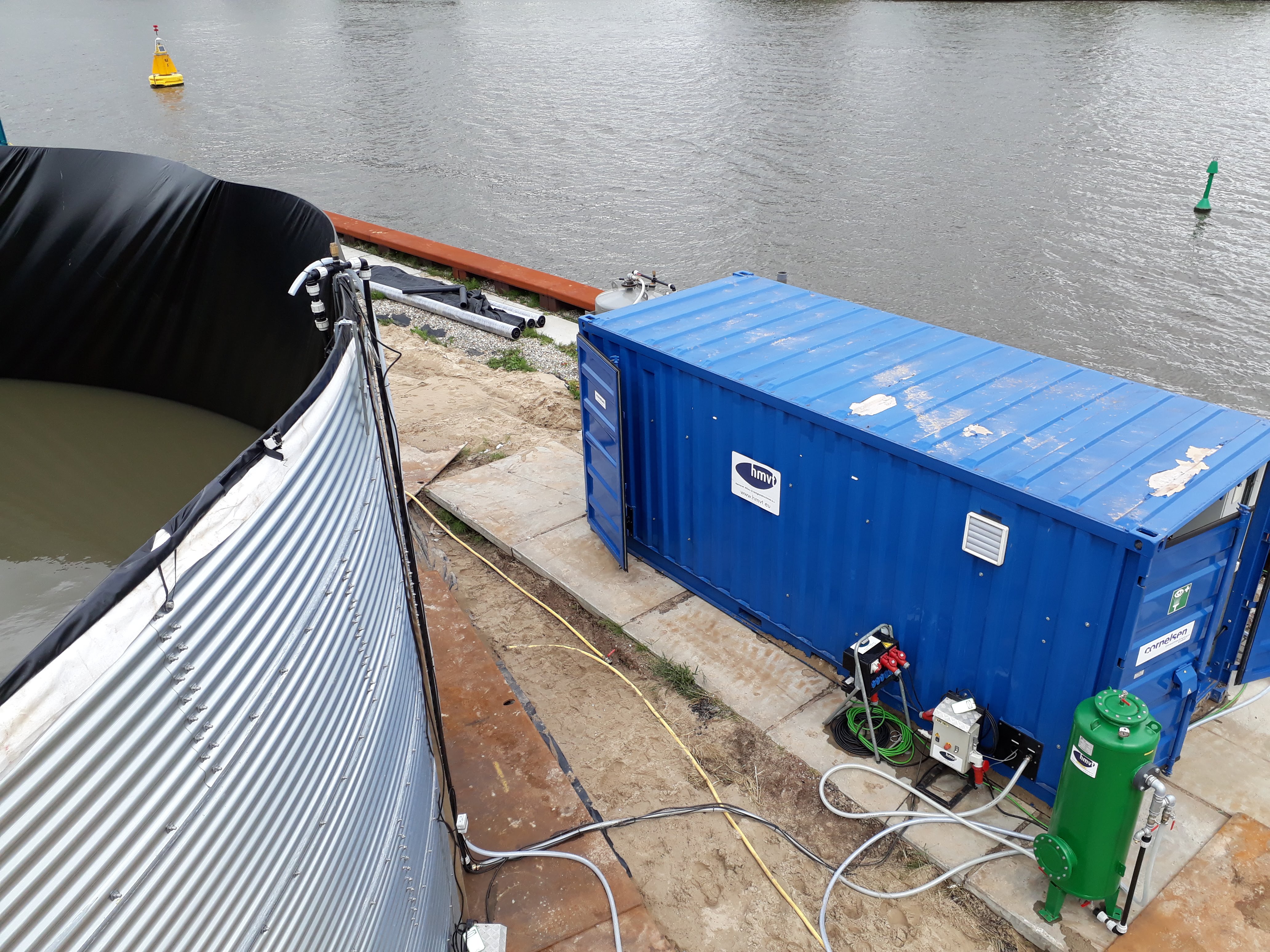Challenge
PFAS (per- or poly-fluorinated alkyl substances) is an extensive group of substances, which includes PFOS (perfluorooctane sulfonate) and PFOA (perfluorooctanoic acid). These are substances that can rapidly spread in the environment. Soil and groundwater can become quickly contaminated. In addition, the PFAS can change composition under changing conditions in the soil. Due to the specific properties of the PFAS, these can be very difficult to clean up. At a certain site in Amsterdam a soil remediation had to be carried out as part of the redevelopment. Included in this clean-up were a number of hotspots with PFAS in the soil. For the purification of the water at the site, some very stringent remediation and discharge standards applied. Purified water could only be discharged at PFAS levels below 1 µg/l.
Solution
We proposed an innovative technique for the purification of the groundwater. In order to determine the possibilities of the technique, we first carried out a pilot. This included investigating the detailed composition of the PFAS as this can have a strong influence on the purification. It was of course also examined whether the technique was capable of realising the necessary degree of purification (approximately 90-95%). During the pilot we also determined what the design of the technique would look like for the location. The pilot was a success. The PFAS turned out to consist of approximately 85% PFOS. PFAS levels of around 100 µg/l could be brought back to approximately 1 µg/l. In combination with a post-purification using extremely low levels of activated carbon it was possible to meet the discharge requirements.
The technique is broadly based on the addition of a specifically developed agent that causes flocculation of the PFAS in the water. The agent concerns a vegetable compound that is harmless to the environment. Adding and mixing this agent leads to the formation of ‘microflocs’, which can then be removed from the water by means of microfiltration. In this way, the PFAS are collected in solid form. The amount of waste that contains PFAS is only very small. Depending on the precise composition of the PFAS, approximately 10-20 kg of waste containing PFAS is generated per 1,000 m3 of purified water. The major advantage of the technique is based on a number of facets. The predictability of the functioning of the technique and the costs are clear in the design stage of a project. What’s more, the amount of PFAS waste is very small compared to other techniques. This all leads to fewer project risks and a considerably lower cost level for water contaminated with PFAS.
Results
The groundwater purification at the site has managed to reach the discharge norms. The groundwater extracted for the remediation and the necessary reduction in groundwater level has been purified. The application of this technique within the project has led to a considerable reduction of the costs for groundwater purification. During the purification of the groundwater, experience has been gained which will help to make any future applications of the technique much more predictable. One such point is that it is very important to remove as many of the floating particles in the water flow as possible prior to the purification. It also turned out that the composition of the PFAS in the extracted groundwater can change during the remediation. This is probably due to the remediation treatment in the soil.

